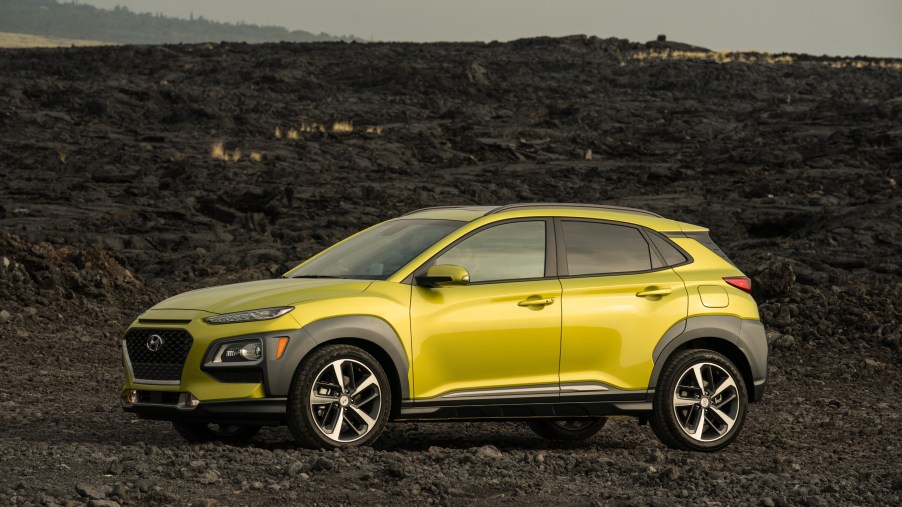
This or That: The Mazda CX-30 vs. the Hyundai Kona
As you’re shopping around for the best subcompact crossovers to buy in 2020, you’ll see consistently see that the Mazda CX-30 is among the top of its class. You’re also likely to see the Hyundai Kona at one of the best crossover SUVs too. Choosing between the CX-30 and the Kona can get pretty tough because they are both such appealing options. Take a look and see which option might be right for you.
Power and dynamics
Sometimes carmakers just make their cars look sporty and capable but the actual handling leaves a lot to be desired. That isn’t the case with either the Kona or the CX-30. With the CX-30, you get a smooth ride quality and a singular 2.5-liter four-cylinder engine option that generates a 186-horsepower. Overall, the CX-30 is pretty much the same as driving the Mazda 3. Drivers particularly appreciate that the CX-30 feels stable, no matter how knotty the roads get. It takes about eight seconds for the CX-30 to go from 0 to 60 mph.
The Hyundai Kona is just seconds faster than the CX-30, that is if you go for the turbocharged four-cylinder engine option with a 175-hp. The standard setup features a 147-hp four-cylinder engine that’s balanced and smooth, but it’s not as animated at the turbocharged version. But no matter which engine you choose, you’ll find that the Kona is nimble, fun, and engaging.
When it comes to fuel economy, the Kona and the CX-30 are pretty much neck and neck here too. The CX-30 has a fuel economy rating of 28 mpg while the Kona gets a combined 27 mpg. Both ratings are about average for the subcompact SUV class.
Style on the inside and out
On the outside, the CX-30 appears as both sporty and refined. The Kona is a little funkier and available in bolder colors. Both the CX-30 and the Kona are known for their luxury-like interiors. The CX-30 offers a dapper-looking cabin that comes standard with comfortable cloth seats; faux leather and genuine leather upholstery are available. Similarly, the Kona offers an upscale cabin but you have the option to add more flair with brightly colored trimmings.
Cabin style is a matter of preference, but as far as functionality goes, the CX-30 offers a little more legroom and cargo space. The Kona is definitely a tighter fit and the rear seat room is particularly limited.
Technology and safety
Technology, including infotainment and safety features, has become increasingly important. The Kona’s infotainment display is user-friendly and comes with a 7-inch touchscreen infotainment display along with Apple CarPlay and Android Auto connectivity. The CX-30 also has desirable standard infotainment features but controls aren’t as easy to use and the 8.8-inch display isn’t a touchscreen.
On the other hand, compared to the Kona, the CX-30 comes standard with more advanced safety features including automated emergency braking, adaptive cruise control, and lane-keep assist with lane-departure. The Kona has popular driver-assist features too, but not as many standard ones compared to the CX-30.
The final verdict
The Kona starts at $20,300 and the CX-30 starts at $21,900. If you’re looking for a more elevated sense of style and luxury at a bargain, we’d say that the Kona is the better option, plus it feels more balanced compared to the CX-30. The CX-30 is a still good option, but it’s just not as dynamic.


